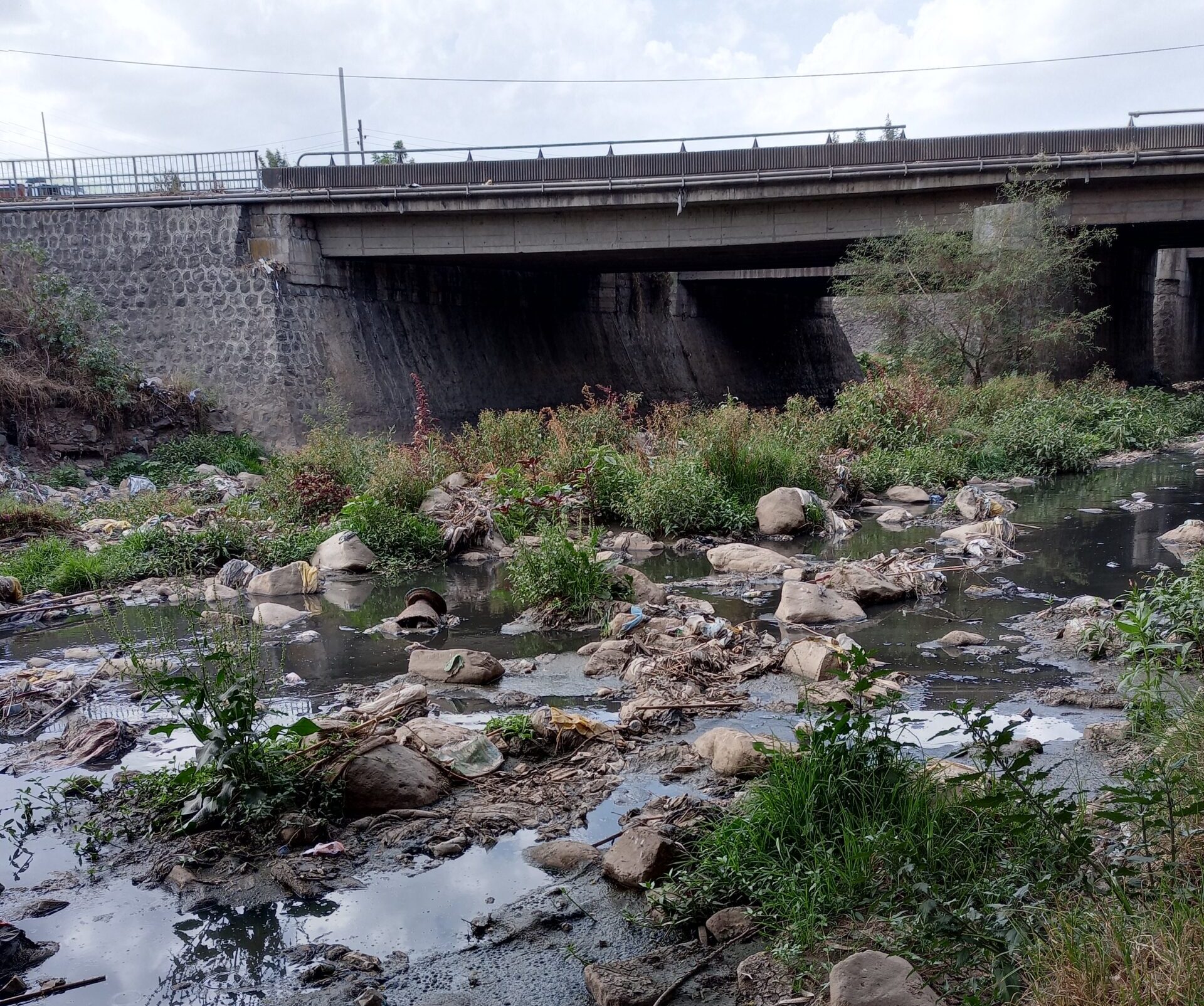By Kidist Hailu Tadesse
This blog is based on the research led by Kidist Hailu Tadesse published in the Journal of Hydrology: Regional Studies which presents the current state of knowledge about emerging organic contaminants in Awash River Basin water supply sources, including tap water.
The Awash River Basin in Ethiopia, a critical water source for drinking, agricultural and industrial activities, is facing significant challenges due to the presence of emerging organic contaminants (EOCs). EOCs are a growing concern worldwide due to their potential impact on the environment and human health, with this latest research highlighting their presence across the upper Awash River basin from urban, industrial and agricultural sources.
Understanding Emerging Organic Contaminants
Emerging organic contaminants include a variety of natural and synthetic compounds found in pharmaceuticals, personal care products, and industrial chemicals. Unlike conventional pollutants, EOCs are not widely regulated and are often not detected by conventional water quality monitoring methods. Their presence in water bodies can have adverse effects on both human health and the environment, making it crucial to understand their sources, distribution, and impact.
Exchange of contaminants between surface and groundwater
We used stable and radioactive isotopes (18O, 2H and 222Rn) to track the exchange of contamination between surface and groundwater systems. Uncontrolled waste disposal from industries, agriculture and urbanization causes the degradation of surface water quality. The isotope tracking showed how interaction with surface water bodies causes contamination of the shallow groundwater aquifer. As a result of this, tap water sourced from the decentralized shallow groundwater system also contains emerging organic contaminants.
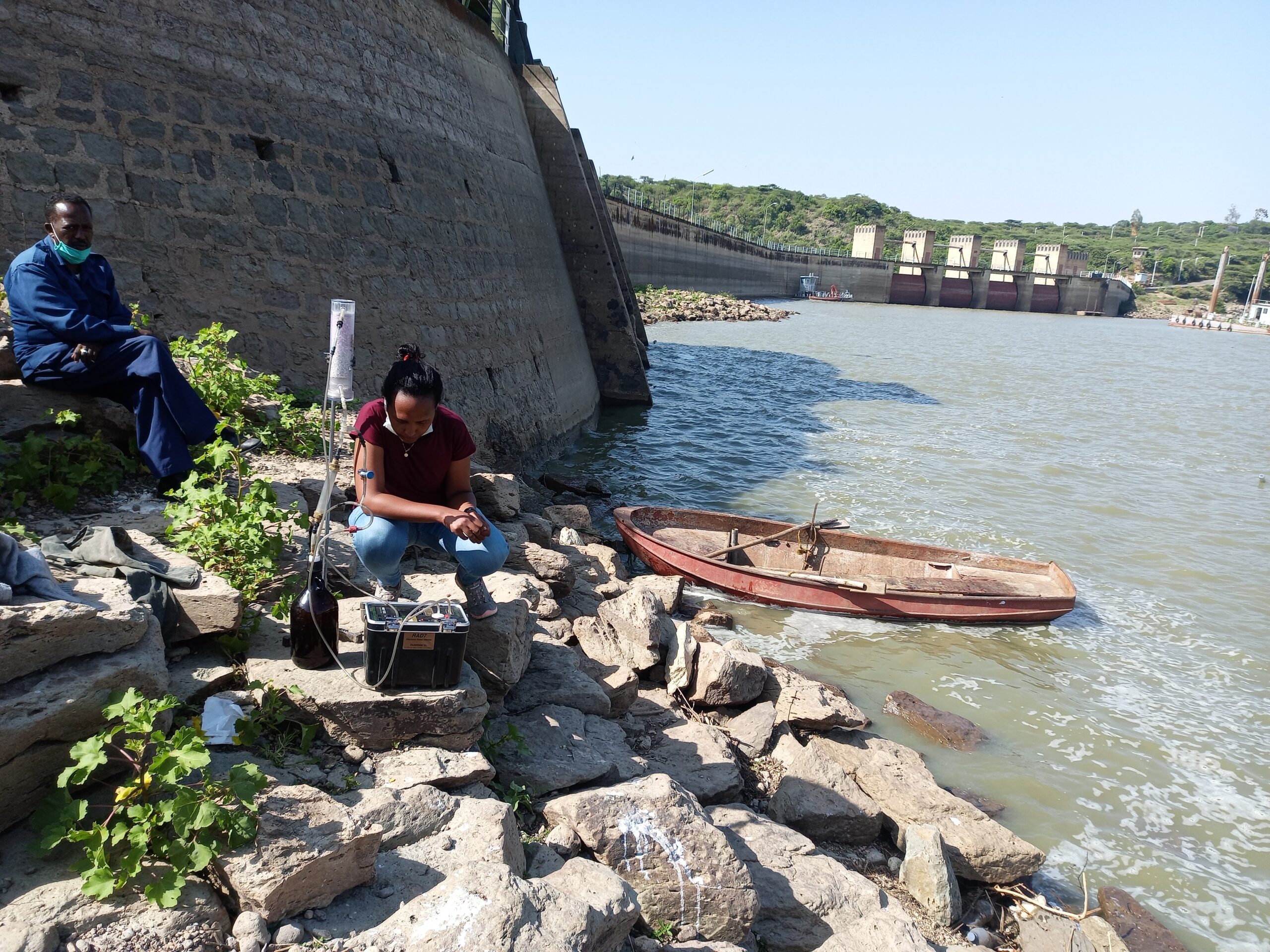
Caption: In situ measurement of radioactive isotope (222-Rn) to explore surface-groundwater interaction at Koka reservoir (Photo credit: Kidist Hailu Tadesse)
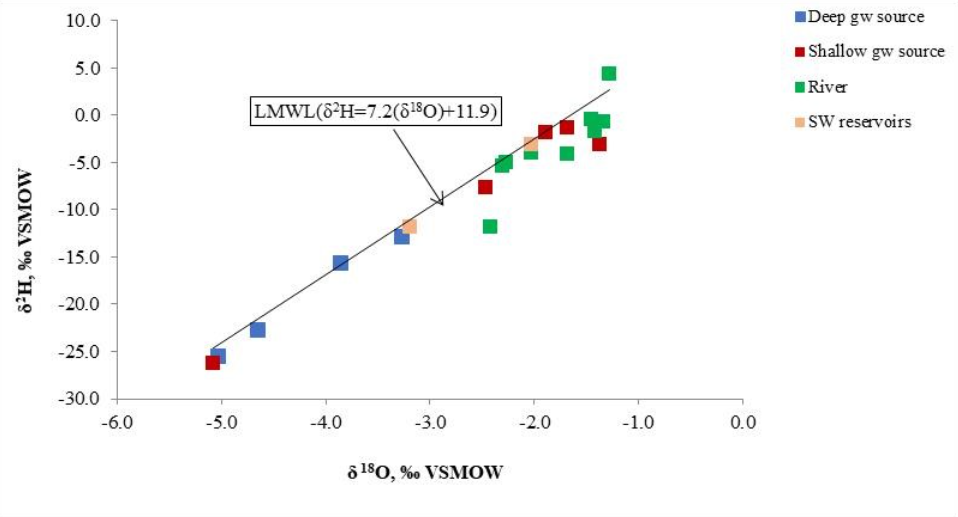
Caption: δ2H and δ18O plot of samples taken from Deep wells, shallow wells, and surface water reservoirs (showing the interaction between surface and groundwater)
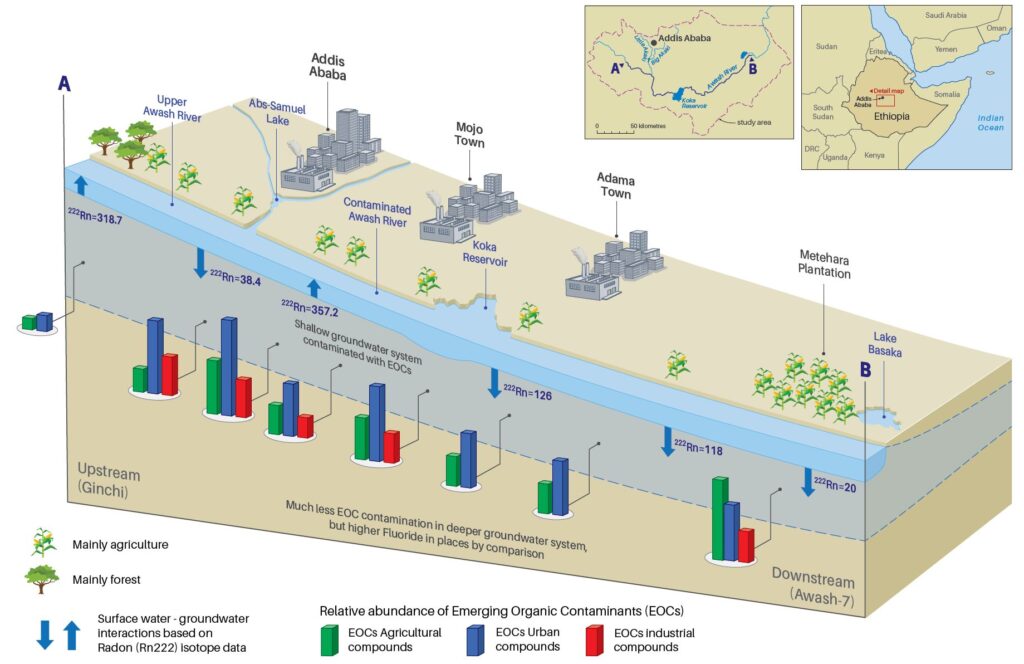
Caption: Conceptual diagram showing pollutions sources (urban, industrial, and agricultural), surface-groundwater interaction (indicated by 222-Rn measurement) along the Awash River main course and relative abundance of EOCs (Credit: Kidist Hailu, Seifu Kebede, Behailu Birhanu and BGS)
Key Findings
• Contaminant Sources and Distribution: The study identified EOCs from agricultural, urban, and industrial sources. Urban and industrial contaminants were prevalent in upstream areas, while agricultural contaminants dominated downstream sites.
• Surface and Groundwater Interaction: The analysis revealed significant interactions between surface water and groundwater. Deep groundwater was found to be more protected from contamination compared to shallow groundwater and river water, highlighting the vulnerability of shallow aquifers to pollutants from various sources.
• Impact on Water Quality: The presence of new contaminants, previously untested in the region, suggests the need to revise existing water quality monitoring practices. These contaminants pose potential risks to human health and the environment, emphasizing the importance of regular water quality assessments.
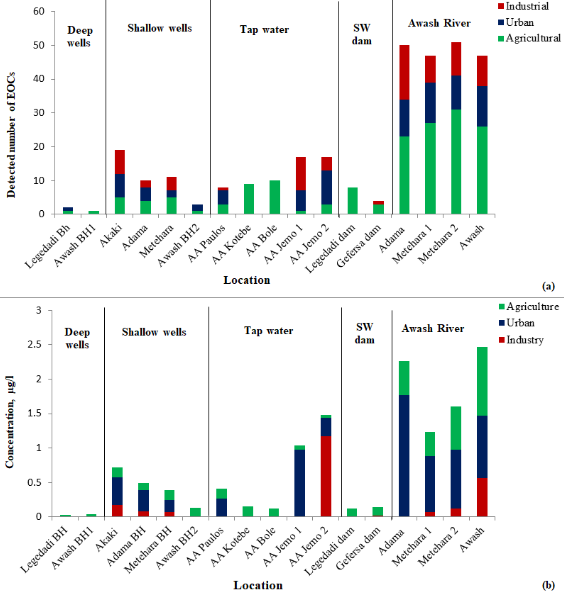
Caption: Number (a) and Concentration (b) of EOCs in all water sample sources
Implications for Water Management
The findings underscore the urgent need for improved water management strategies in the Awash River Basin. Given the diverse sources of contamination and their widespread impact, a multi-faceted approach is required. This includes:
- Enhanced Monitoring: Implementing advanced monitoring techniques to regularly track the presence and concentration of EOCs.
- Regulatory Framework: Developing regulations to control the discharge of emerging contaminants from industrial, agricultural, and urban sources.
- Public Awareness: Raising awareness about the potential health risks associated with EOCs and promoting practices that reduce contaminant release into water bodies.
By identifying the sources and distribution of these pollutants in the Awash River Basin, this research provides valuable insights for developing effective water management and pollution control strategies in the region. Ensuring the sustainability of water resources requires concerted efforts from policymakers, researchers, and the community to address the challenges posed by emerging contaminants.
Read the full paper:
Tracing contaminants of emerging concern in the Awash River basin, Ethiopia

